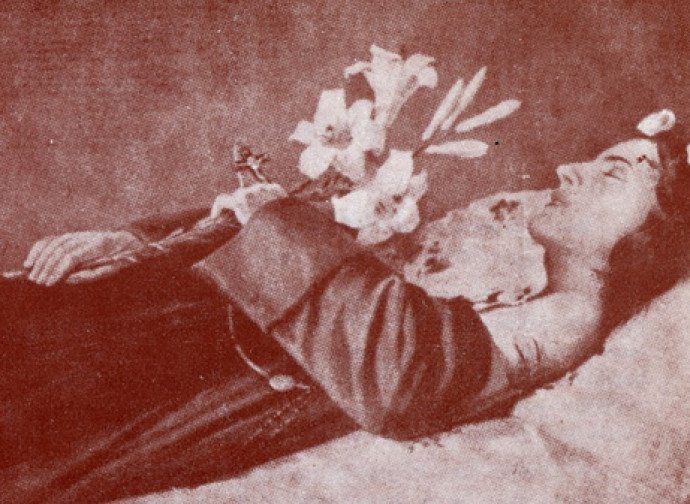Saint Agostina Pietrantoni
Saint Agostina Pietrantoni (1864-1894) lived in the years immediately following the Unification of Italy, marked by radical hostility to Catholicism on the part of power. She served God by giving herself to the sick...

Saint Agostina Pietrantoni (1864-1894) lived in the years immediately following the Unification of Italy, marked by radical hostility to Catholicism on the part of power. She served God by giving herself to the sick, with a concern for her neighbour that went as far as the sacrifice of her life, which was taken away from her by the mad gesture of one of the sick people she had assisted.
The second of eleven children, she was baptized with the name Livia. The ardent faith was passed on to her in her family, where “everyone took care to do good and prayed often”, as one witness said. She grew up helping her parents, two humble farmers, in their work. She then decided to join the Sisters of Charity of St Joan Antida Thouret, with a commandment at the base of the Rule: “You will love”.
She carried out her work of charity at the Holy Spirit Hospital. Here, a couple of years after the arrival of Sister Agostina, the Freemason Achille Ballori, future Assistant Grand Master of the Grand Orient of Italy, became director. As soon as he took over the leadership of the historic hospital - where saints such as Philip Neri, Charles Borromeo and John Bosco had served - Ballori expelled the 37 Conceptionists Fathers who took care of spiritual assistance, had the crucifixes and sacred images removed, and forbade the nuns to pray in public and speak of God to the sick. In time Sister Agostina managed to hide an image of the Blessed Virgin in a closet, to whom she offered flowers every day and wrote cards. “Most Holy Virgin”, one of these reads, “console, calm down, convert the unhappy one to whom I cannot speak”.
Together with the other nuns she often suffered offenses and insults, but her generosity towards the sick was never lacking: “Always very sweet, she lent herself to do not only what was her duty, but also more, and very willingly. Ready, humble, cheerful”, recalled a doctor. After being cured of an infectious disease contracted in hospital, she was assigned to assist tuberculosis patients. She continued with her discreet acts of charity towards them, despite all she had to endure, as when she was bludgeoned by a sick man from whom she had confiscated a knife. To the sisters who cared for her, she said, “We must not neglect our duty of charity to escape danger, even if it costs us our lives. We must expect everything. Jesus was treated in this way”.
She refused to abandon the treatment of tuberculosis patients even when she became infected with it herself. She was barely 30 years old when Giuseppe Romanelli, a convicted criminal who had been expelled from the hospital because of his constant intemperance, wrote her a note threatening her with death, even though she had nothing to do with it. He killed her on the morning of 13 November 1894. There was a huge crowd at her funeral. As one chronicler of the time wrote, “It was not the usual long line of soldiers, the crowd of officialdom in rare and dazzling colours. It was the Rome of the people; it was the kind, charitable, saintly Rome that gave the last farewell to the one who, sacrificing heartbeats, thoughts and life, had angelically given herself to charity, to the relief of the wretched”.
Patroness of: nurses
Learn more: Homily of John Paul II for the canonization (18 April 1999)




